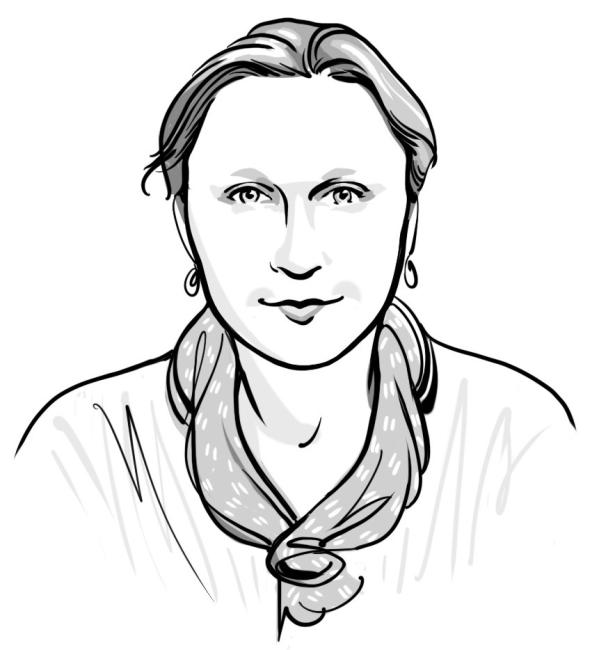March 2023: Handpicked
Each month, the Yiddish Book Center asks a member of our staff or a special friend to select favorite stories, books, interviews, or articles from our online collections. This month, we’re excited to share with you picks by Michelle Sigiel.

Michelle Sigiel catalogs Yiddish books and materials and creates and develops metadata for digital collections at the Yiddish Book Center. She received her MLIS with a concentration in archival management from Simmons College in 2017, an MA in history from the University of Vermont in 2013, and a BA with three simultaneous degrees in history, political science, and Holocaust & genocide studies from Keene State College in 2010. She has held various positions in several academic libraries and special collections, where her work has focused on metadata, archival description and arrangement, and preservation.
A yidish-englisher ovnt in ondenk fun rokhl korn olehasholem tsu der derefenung fun ir arkhiv
This program discusses the influence of Rokhl Korn’s work on English-Canadian writing and identity. It shows how the complex ties of Yiddish-Canadian and English-Canadian identity are entwined through migrations from Eastern Europe and documented in the Jewish Public Library of Montreal’s archival recordings, reflecting the diversity of Yiddish culture and identity in Canada. I thought this was interesting because it explores the diaspora culture and hyphenated identities so common in Yiddish materials. Much of the materials I catalog deal in some way with the Yiddish-speaking Jewish diaspora and identity.
Di groyse aynzamlung: der arkhiv fun der yidisher arbeter-bavegung, Nyu York
I am fascinated by Yiddish labor organizations, the discourse on labor activities, and how different groups propose to document their activities and histories. Overseeing metadata and digital files for Gerechtigkeit (Justice)—a labor newspaper by the International Ladies’ Garment Workers’ Union—has made me interested in these groups’ internal processes and culture.
Arkhiv funem idishn sotsyalist redagirt fun Leon Hazanovitsh
I chose this because I think it reflects how we have many documents in our collections from the Russian revolutionary period and how it has remained such an important period for Yiddish culture and identity. The Yiddish-speaking world published voraciously on subjects related to communism, socialism, and labor. However, these documents were meant to be ephemeral and not permanent in nature, and yet we have managed to preserve such documents in our collections.
Fira Bramson Wexler Oral History Interview
I have been cataloging the Wexler Oral History Project’s interviews and found this interview by Fira Bramson, the former bibliographer of the Judaica collection at the Lithuanian National Archives, to be fascinating. I began my Yiddish language journey studying in Vilnius at the Vilnius Yiddish Institute and was very interested in Fira’s experiences as a library professional working in Lithuania and Kaunas before the war. I think this interview is important because so many people come to librarianship with a personal connection to Yiddish or having grown up with Yiddish as a mame-loshn.
“Eating the Archives” by Mikhl Yashinsky
This From the Vault piece on Yiddish and English-language recipe clippings discovered in the Yiddish Book Center’s vault provides a look into Jewish identity and culture through food. Interest in the overlap between food archives and Yiddish culture has abounded in recent years, and I frequently find myself looking for these more ephemeral materials related to cooking and food for users.
Q&A
Tell us about your selections and what they say about your relationship with Yiddish language and culture.
My interest in working with Yiddish materials developed when I spent time at the Yiddish Book Center as an intern finishing up my library science masters in 2017. I was hunting for a full-time position in archives and special collections at the time, and interning at the Center exposed me to a wide variety of rare publications and archival materials in Yiddish, ranging from handwritten notes and manuscripts to annual books by cemetery societies and school yearbooks. These selections represent some of the diversity of topics and material types I come across on a regular basis while cataloging and working on metadata for our collections. The work I do enhances access to items such as these and approximately 30,000 cataloged books (a good number accessible on our website), and I feel as though I am doing my part to make these materials more discoverable for users amid all of the data on the web.
What are you working on next?
I am currently working on cataloging all of the Wexler Oral History Project’s interviews and generating subject headings and controlled vocabulary research to make the collection searchable in WorldCat and advanced search features on our website.
We also just started work on the Universal Yiddish Library, which has also been years in the making. It will combine the Yiddish book collections of four institutions—New York Public Library, National Library of Israel, YIVO Institute for Jewish Research, and the Yiddish Book Center—to create a site where you can search up to 40,000 digitized Yiddish books, all in one place, in full text. The Universal Yiddish Library will include almost every Yiddish book ever published.
